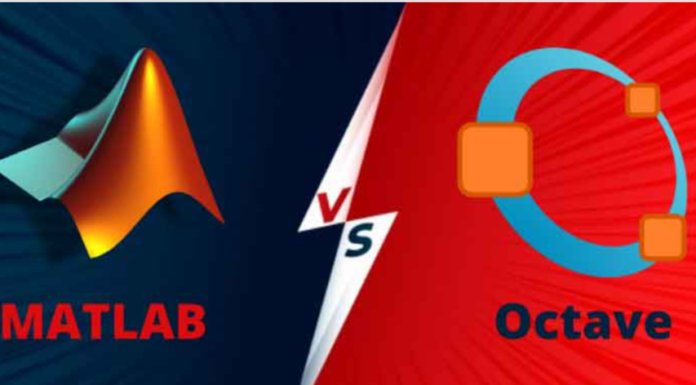Construction firms, mining companies and the military constantly need to detect unexplored materials, tunnels and mines in the ground. Luckily, this is no longer complicated, thanks to ground-penetrating radar (GPR). This is a geophysical technique that uses radar pulses to image what’s beneath the surface.
Sectors that need to know more about what is beneath the ground have found it quite effective, not to mention non-intrusive. You can use the technology to look for underground services, asphalt, concrete, cables, pipes, metal, and other features. It uses microwave radiation (UHF/VHF frequencies) in the radio spectrum to find reflected signals from underground structures. Also, you can prefer Septic Tanks that treat human waste and separate solids and liquids in wastewater.
Benefits of Ground-penetrating Radar
Having said that, GPR technology is non-invasive and safe to use, making it perfect for research including public places, internal spaces, or landscaping regions. It is also affordable enough for routine use. Its simplicity of use, a vast range of applications, and diverse detection capabilities are some of its key advantages.
Operating GPR Technology
Yet another one of the benefits of GPR is the ease of use. With just one piece of equipment and a trained operator, GPR may be used to quickly photograph a broad region.
To operate the system, the GPR operator moves the device across the target area while following successive survey lines to start the imaging. An inbuilt transmitter then transmits electromagnetic energy pulses into the ground as it passes through the area.
If the waves detect an anomaly or object, it sends back either scattered, refracted or reflected signals depending on the density of the object. Following that, the device’s receiver detects and stores the returning signal.
By performing a series of subsequent scans, a GPR operator can gather extensive data from a targeted area. They then use onboard software to convert this data into a digital image, producing a map of abnormalities such as voids and underlying structures.
Before the data is used by laypeople, it has to pass through the hands of skilled GPR professionals. That’s because real imaging often appears as static black and white images or multicoloured bands with anomalies indicated by hyperbolas. To an expert, it’s a job that’s simple to do in real-time, allowing parties to identify areas of interest or concern immediately.
GPR devices are not only easy to use. They can also quickly scan difficult-to-reach places because they are compact and frequently portable. For shipping to distant destinations, some units however may need to be disassembled.
What Does GPR Detect?
Typically, GPR technology detects voids in soil, rock, and concrete. It can find both metallic and nonmetallic items, and it might also be able to spot changes in the ground’s composition.
Detection of the following materials is possible with GPR:
• Clay
• Concrete
• Metal
• Plastic
• PVC
• Water
• Wood
Ground-penetrating radar can also alert an operator about recent changes in the soil’s state brought on by digging or the infiltration of foreign material. Moreover, because multiple frequencies may be utilised when scanning, GPR pulses may be adjusted to the make-up of the ground and can penetrate to varying depths. GPR may be used to scan concrete, and handheld devices can scan vertical surfaces or ceilings.
Typically, GPR scans can reveal the thickness and depth of subsurface anomalies. Additionally, they can give a precise visual map of the target area with coordinates that correspond to points of interest because of their GPS and mapping integration capabilities.
Standard GPR Applications
As GPR technology develops, it is increasingly the instrument of choice across a wide range of industries, with common uses that include:
1. Mapping of Utilities
Excavators need to know what is below the surface before going deeper than 18 inches so they don’t run into anything valuable or dangerous. As such, GPR is frequently used by contractors and utility companies to find underground wires and pipelines, especially older, unmapped infrastructure. Along with utilities, GPR can also find unmapped objects including water boxes, septic tanks, missing valves, and abandoned lines.
2. Law Enforcement
Law enforcement officials can use GPR to find underground or covert buildings like tunnels and hideouts as well as buried caches of drugs or weapons. GPR can also be used to scan vertical surfaces like walls, therefore assisting investigators in finding hidden objects needed as criminal evidence without causing excessive damage to the objects or structure. Additionally, GPR can also help law enforcement locate homicide victims since it can identify disturbed soil.
3. Geophysical Surveys
To geophysical researchers, GPR can offer vital information that enables scientists and engineers to detect groundwater, identify strata layers, and identify bedrock. It may also be used to determine the thickness of the ice as well as find sinkholes and saltwater intrusion.
4. Cemetry Mapping and Grave Location
GPR can assist researchers to find missing graves and burial grounds since it can recognize soil irregularities and unearth buried artefacts. That said, GPR can help with plotting new burials in existing cemeteries, particularly in locations where there are no burial records.
5. Structural Evaluations
The structural integrity or damage of a structure can be evaluated using GPR data. GPR is essential for bridge deck analysis because it may find cracking, voids, and concrete spalling, enabling engineers to see structural deterioration and identify the need for remediation.
6. Conservation of The Environment
GPR scans can find buried toxic drums and other concealed environmental hazards. Environmentalists may be able to remove dangers with little harm to neighbouring plants and animals by using the data to get insight into the direction of contaminant migration.
7. Search & Rescue
Rescuers can utilize GPR devices that continuously broadcast signals into the ground to discover victims of landslides, avalanches, or building collapses by seeing movement. In fact, devices with ultrasensitive receivers can pick up even the smallest movements, like shallow breaths.
8. Quarrying and Mining
GPR scans can notify miners of changes in the type of rock and can identify fractures, faults, and joints in rocks. Data collected can then be used for mineral exploration and can give miners the knowledge they need to create tunnel designs that are both safe and efficient.
9. Archeology
Because it gives them a peek into what they’ll uncover below without compromising the integrity of the place, GPR is frequently used by archaeologists when investigating current or potential dig sites. The information may reveal the probable location of tombs, buildings, human remains, or artefacts, and it can assist archaeologists in determining areas that may be vulnerable to harm.
GPR Limitations
Even though it may provide a precise image of beneath objects, ground-penetrating radar does have several limitations that are related to:
• Ground Composition
GPR may be able to scan locations with poor conductivity, including those made of granite or dry sand, up to a depth of 100 feet. The depth of penetration, however, may drop to three feet or less in areas where the ground composition is more conductive, such as regions made mostly of shale or damp clay, due to signal attenuation or absorption. Having said that, results from mineral-rich, saline soil or soil that is rich in soluble salts may also be less reliable.
• Equipment
Utilizing the wrong antenna for the task can be quite restricting depending on the type of antenna used. For instance, despite offering deeper penetration capabilities, low-frequency GPR antennas—typically operating between 100 and 200 MHz—might produce low-resolution images. With tremendous accuracy, higher-frequency antennas that operate between 300 and 1,500 MHz can locate superficial anomalies but cannot go very far underground.
• Weather
The results of a GPR scan may be impacted by heavy precipitation, such as snow or rain because moisture increases ground conductivity.
• Background Noise
Background noise produced by radio and television frequencies can interfere with GPR signals. There may be distortion in scans conducted in regions with high concentrations of these kinds of frequencies.

















